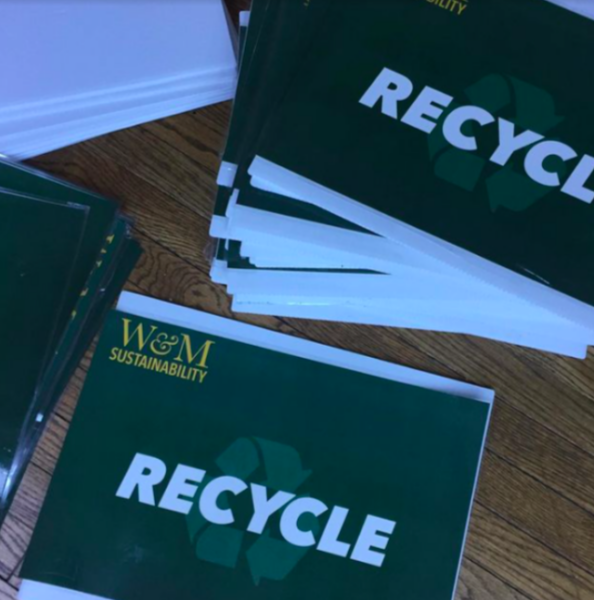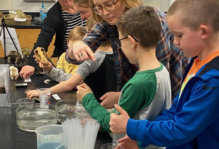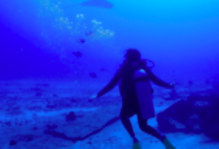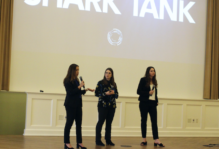Trash Transformation: Eliminating Bin Liners & Centralizing Waste Collection
By Zach Roberts ’22
It is no secret that plastic waste, especially single-use plastics, is causing a huge amount of damage to the environment, especially in oceans and other waterways around the world. William & Mary and William & Mary’s Virginia Institute for Marine Science (VIMS) are both located near major waterways, namely the James River and the Chesapeake Bay. These campuses’ locations make it even more important to be mindful of the waste W&M and VIMS are putting out. Along with countless other students who find passion and purpose in sustainability and environmental protection, I feel the urge to address the incomparably pressing issue of climate change in any way I can, and that is what I decided to do this fall by working as a Sustainability Ambassador.
I collaborated with a fellow Sustainability Ambassador, Margaret O’Connor, and the W&M and VIMS Facilities Management offices to prepare a plan for the elimination of single-use plastic trash can liners and the centralization of waste collection across both campuses. With the combination of Governor Northam’s Executive Order 77, which mandates a full elimination of single-use plastics at state agencies (including public universities) by 2025, and W&M’s Climate Action Roadmap, which includes a provision for 65% of waste being diverted from landfills by 2030, the university is fully leaping into the transition to a cleaner and greener way of living.
To make a real difference and comply with the Executive Order and the Climate Action Roadmap, there must be no half-measures taken. Incremental change is far too slow to counter the pace at which climate change is advancing, and the extent of our plan shows that meaningful impact can be made at a good pace while still preparing and communicating thoroughly. Our proposed plan has three major stages: communication, bin liner elimination, and the addition of central bin infrastructure. The communication stage, to be completed during Spring 2022, involves notifying faculty and staff across campus of these coming changes, while enabling them to submit questions, comments, and concerns. Since they are the ones that will be most directly affected by it, we want to make sure the process is as clear and smooth as possible.
The liner elimination stage, also during Spring 2022, will begin with a pilot program to be undertaken by volunteers. The volunteers will empty the newly liner-less trash and recycling from desk-side bins into central receptacles with a clear description of what can and cannot be recycled. Making that information easily available at the point of disposal will encourage recycling, reduce uncertainty in what can be recycled, and prevent contamination of recyclable materials with non-recyclable waste mistakenly put in the wrong bin. Bins left outside the given office door will be appropriately cleaned and returned, removing the need for a protective plastic liner. The goal is to have 30-40% of campus agree to test the process early-on and give Facilities Management a chance to identify and solve problems — should they arise — while giving a preview to the rest of campus as to how the transition will likely go.
In Fall 2022 central bin infrastructure will be added and extend the pilot program described in stage two to the rest of campus. Any necessary adjustments will be made based on examining the results of the pilot. VIMS’s implementation of the program will be particularly useful, as their smaller size and inherent focus on marine science, reducing plastic waste, and addressing other water pollution, make them a prime case study for later implementation of the program on the larger main campus. While not everything can be scaled effectively between the two, VIMS’s experiences and insights will be invaluable to making sure the program succeeds in its goals on the main campus and overall.
Green transitions are not immediate and take a lot of dedication to achieve. Since I am graduating this May, I will not be around to see the program take full effect in the fall. But an important aspect to keep in mind is that this work is collaborative and ongoing. We may not be around to see the fruits of our labors, whether short or long-term, but we know that the work we are putting in will not be in vain and will make a tangible impact in the W&M community and surrounding environment for years to come.
This program only covers one aspect of the school’s wide-reaching Climate Action Plan, and it will play its role in that plan excellently. The W&M of 2030 will be a more sustainable place, and the foundations we lay now in actions like eliminating single-use plastic bin liners and increasing our recycling rates by centralizing waste collection ensure that the larger transition to a greener future is as smooth as possible.





No comments.
Comments are currently closed. Comments are closed on all posts older than one year, and for those in our archive.